Language testing and assessment ASSESSMENT LITERACY Background (1)

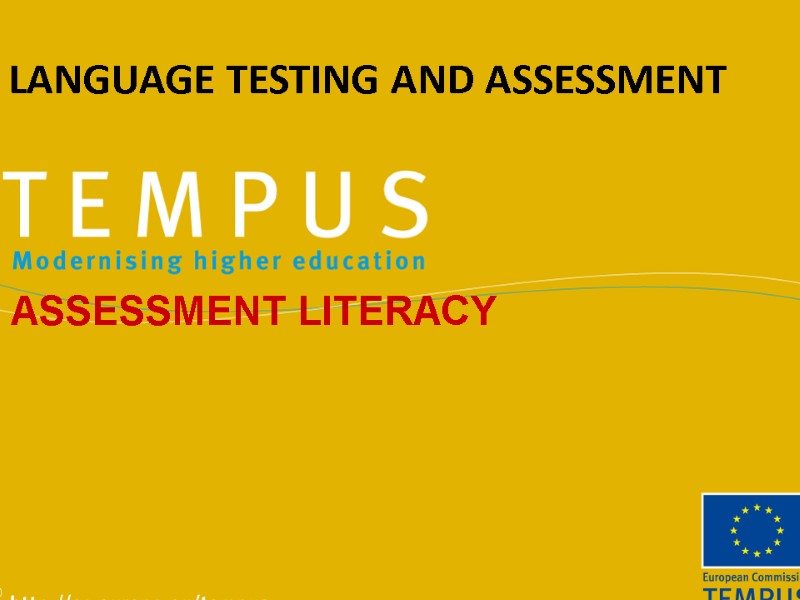
Language testing and assessment ASSESSMENT LITERACY
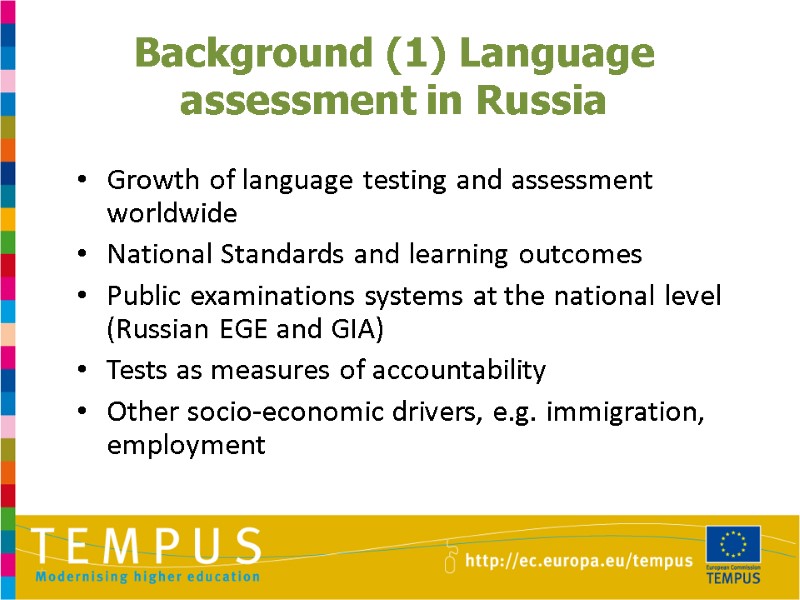
Background (1) Language assessment in Russia Growth of language testing and assessment worldwide National Standards and learning outcomes Public examinations systems at the national level (Russian EGE and GIA) Tests as measures of accountability Other socio-economic drivers, e.g. immigration, employment
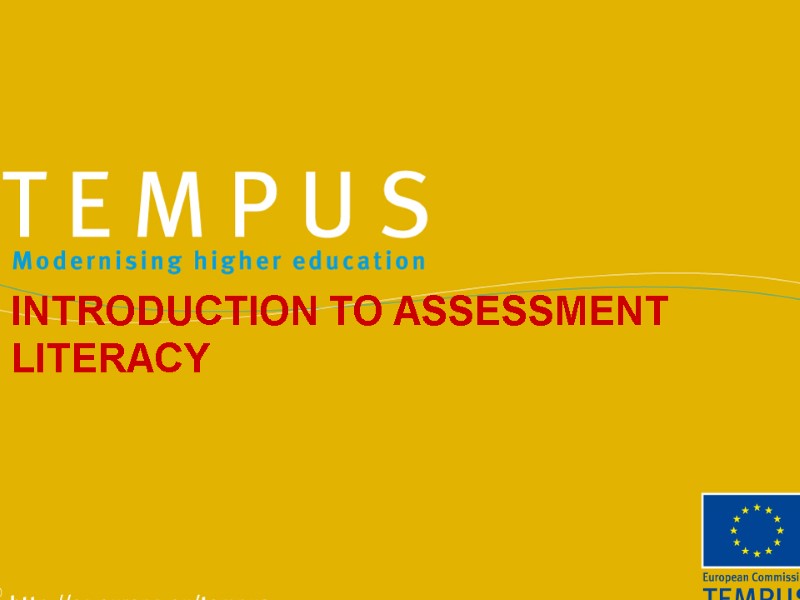
INTRODUCTION TO ASSESSMENT LITERACY
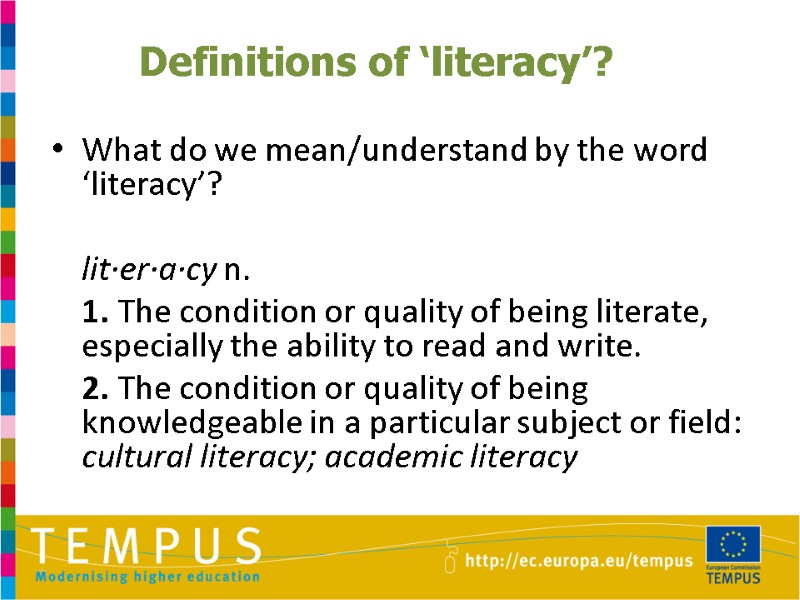
Definitions of ‘literacy’? What do we mean/understand by the word ‘literacy’? lit·er·a·cy n. 1. The condition or quality of being literate, especially the ability to read and write. 2. The condition or quality of being knowledgeable in a particular subject or field: cultural literacy; academic literacy
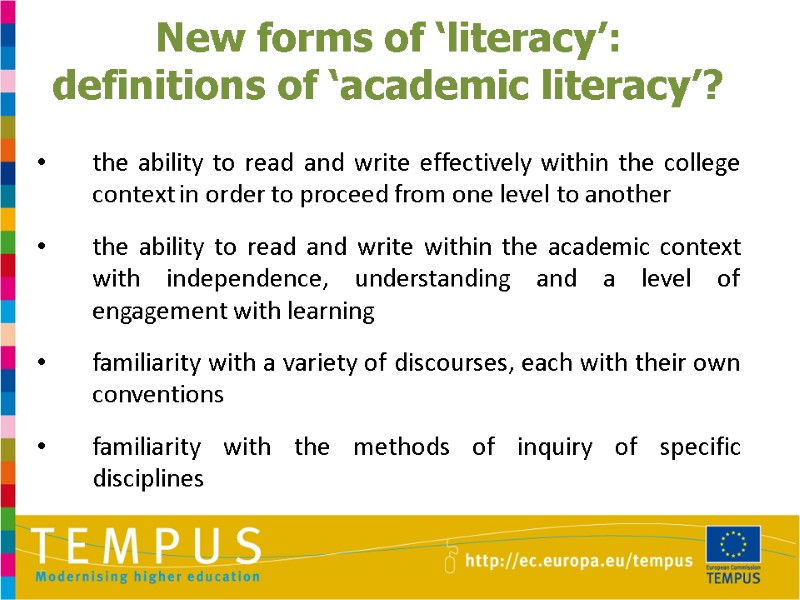
New forms of ‘literacy’: definitions of ‘academic literacy’? the ability to read and write effectively within the college context in order to proceed from one level to another the ability to read and write within the academic context with independence, understanding and a level of engagement with learning familiarity with a variety of discourses, each with their own conventions familiarity with the methods of inquiry of specific disciplines
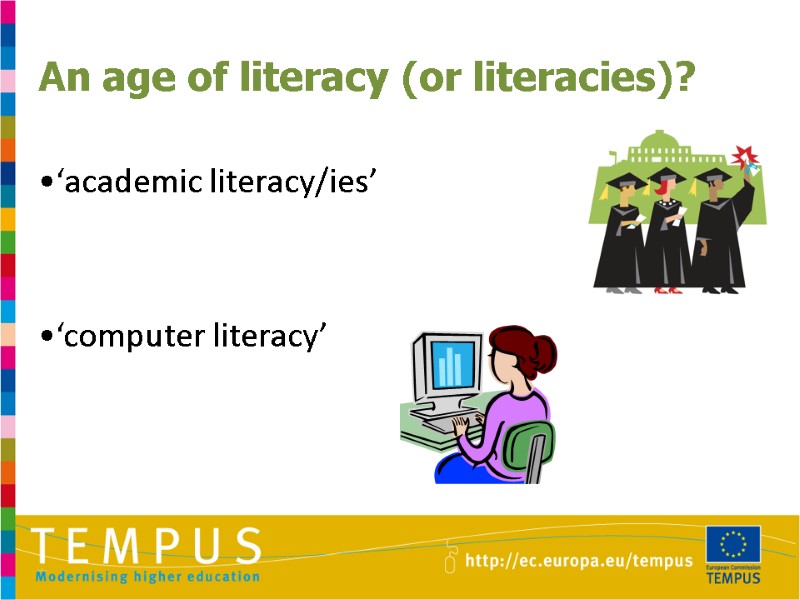
An age of literacy (or literacies)? •‘academic literacy/ies’ •‘computer literacy’
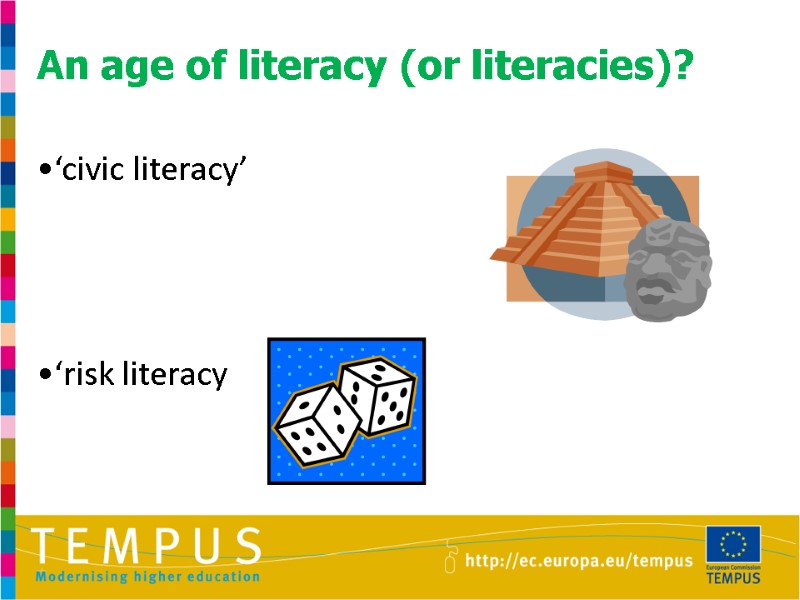
An age of literacy (or literacies)? •‘civic literacy’ •‘risk literacy
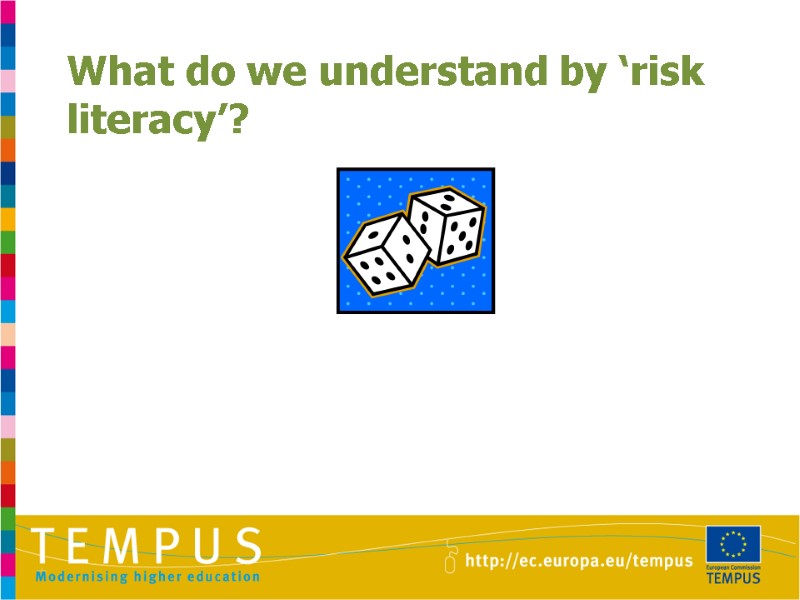
What do we understand by ‘risk literacy’?
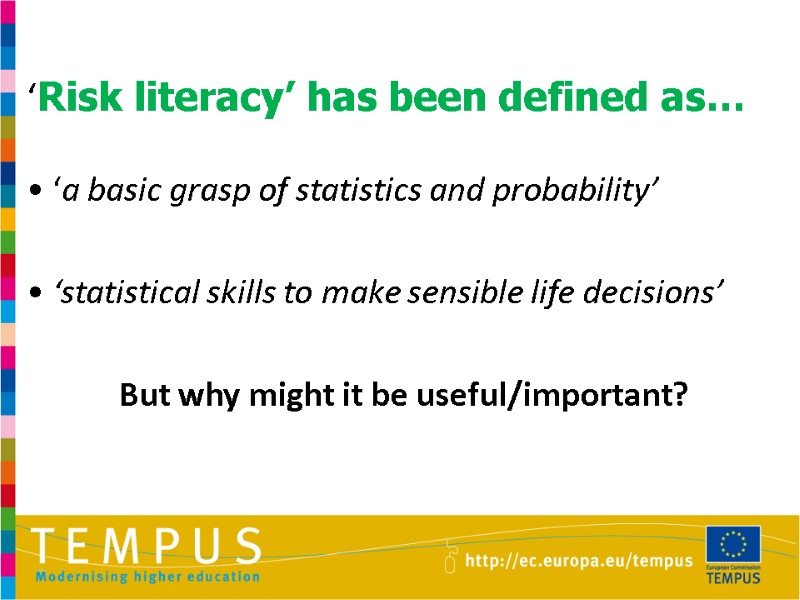
‘Risk literacy’ has been defined as… • ‘a basic grasp of statistics and probability’ • ‘statistical skills to make sensible life decisions’ But why might it be useful/important?
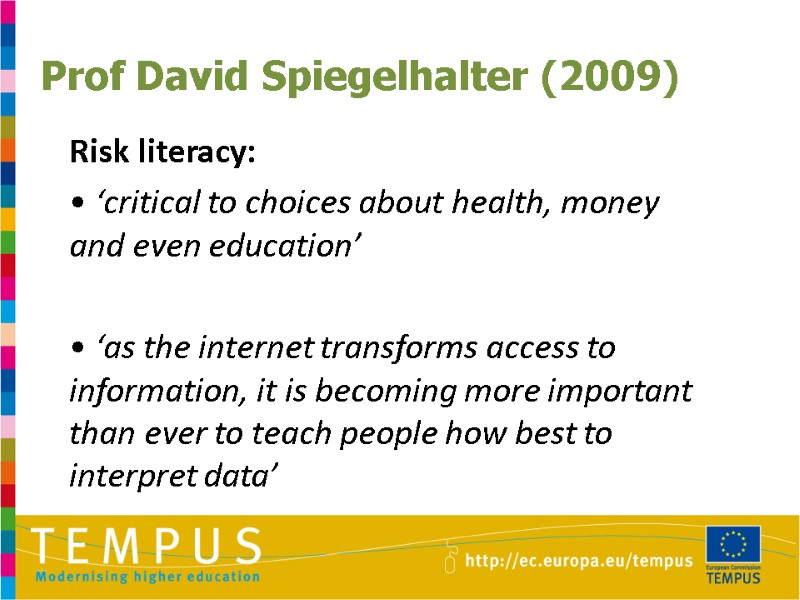
Prof David Spiegelhalter (2009) Risk literacy: • ‘critical to choices about health, money and even education’ • ‘as the internet transforms access to information, it is becoming more important than ever to teach people how best to interpret data’
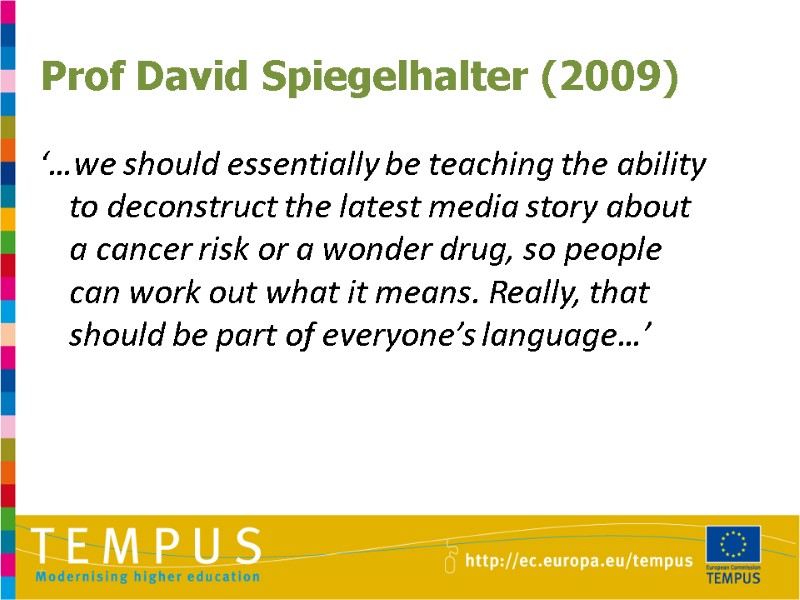
Prof David Spiegelhalter (2009) ‘…we should essentially be teaching the ability to deconstruct the latest media story about a cancer risk or a wonder drug, so people can work out what it means. Really, that should be part of everyone’s language…’
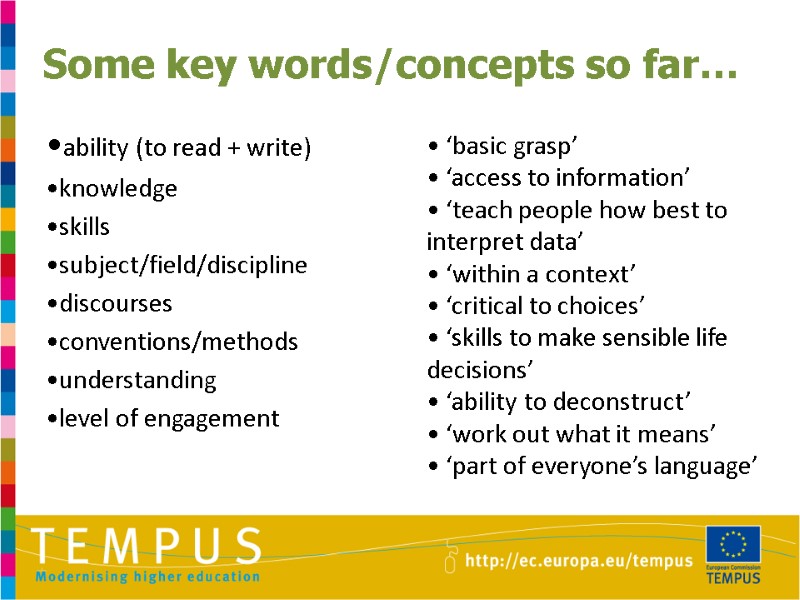
Some key words/concepts so far… •ability (to read + write) •knowledge •skills •subject/field/discipline •discourses •conventions/methods •understanding •level of engagement • ‘basic grasp’ • ‘access to information’ • ‘teach people how best to interpret data’ • ‘within a context’ • ‘critical to choices’ • ‘skills to make sensible life decisions’ • ‘ability to deconstruct’ • ‘work out what it means’ • ‘part of everyone’s language’
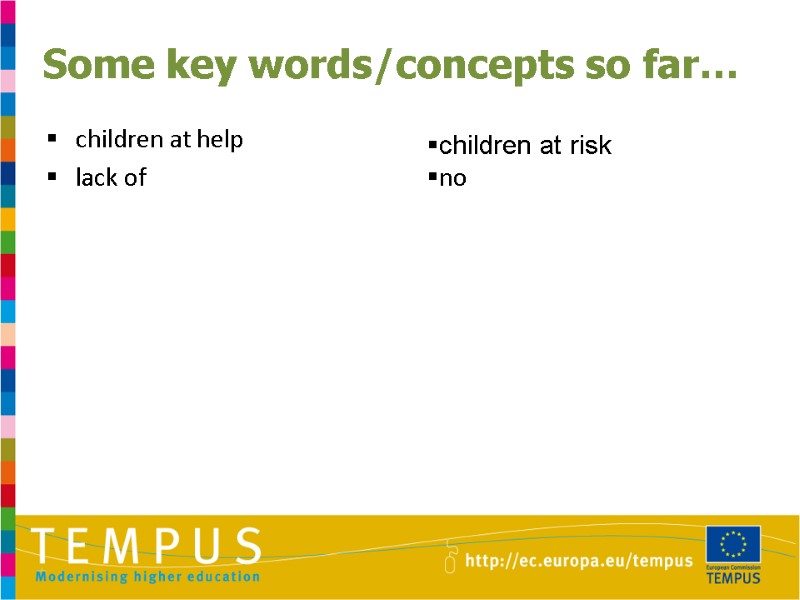
Some key words/concepts so far… children at help lack of children at risk no
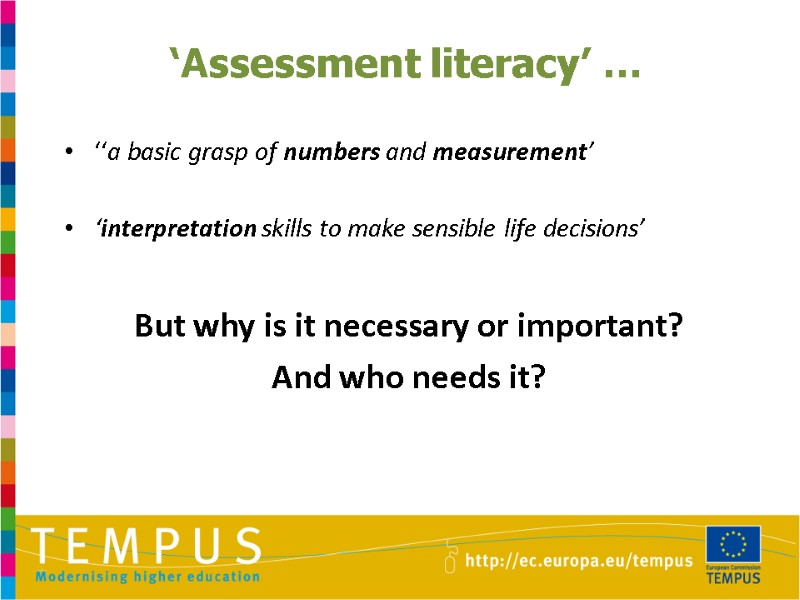
‘Assessment literacy’ … ‘‘a basic grasp of numbers and measurement’ ‘interpretation skills to make sensible life decisions’ But why is it necessary or important? And who needs it?
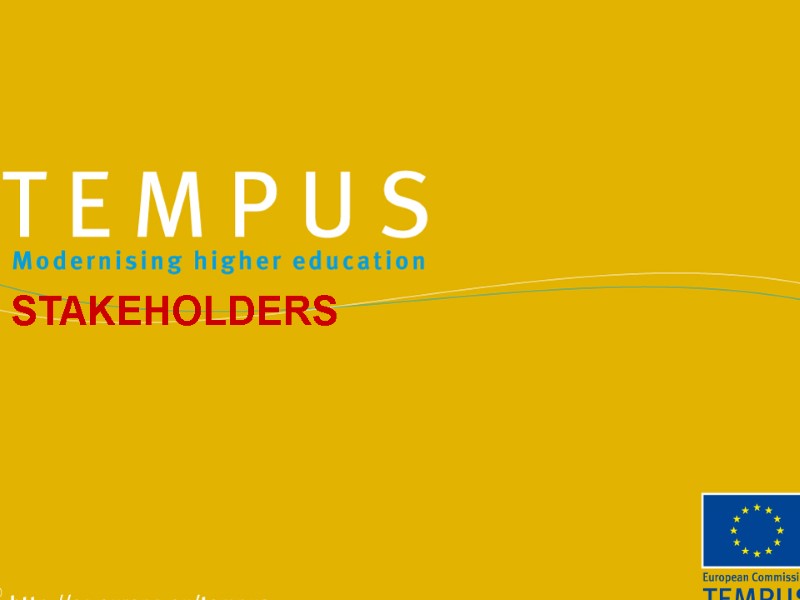
STAKEHOLDERS
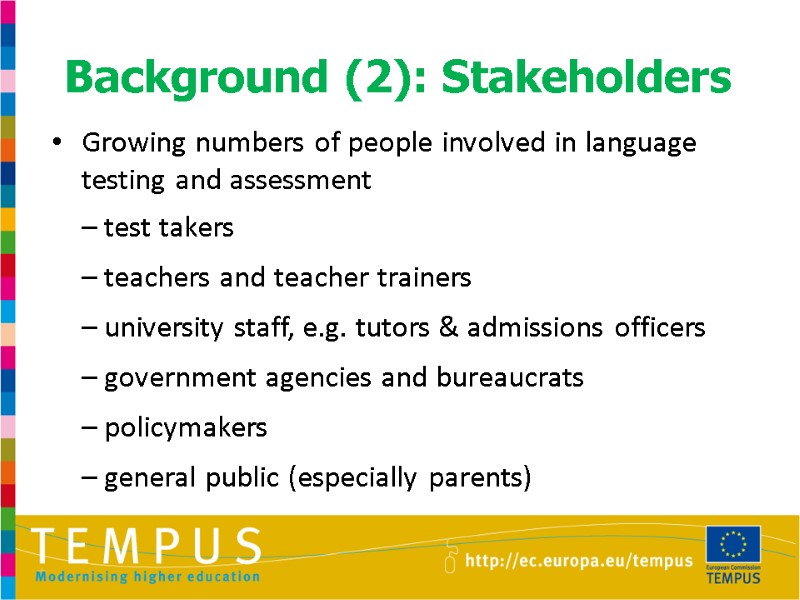
Background (2): Stakeholders Growing numbers of people involved in language testing and assessment – test takers – teachers and teacher trainers – university staff, e.g. tutors & admissions officers – government agencies and bureaucrats – policymakers – general public (especially parents)
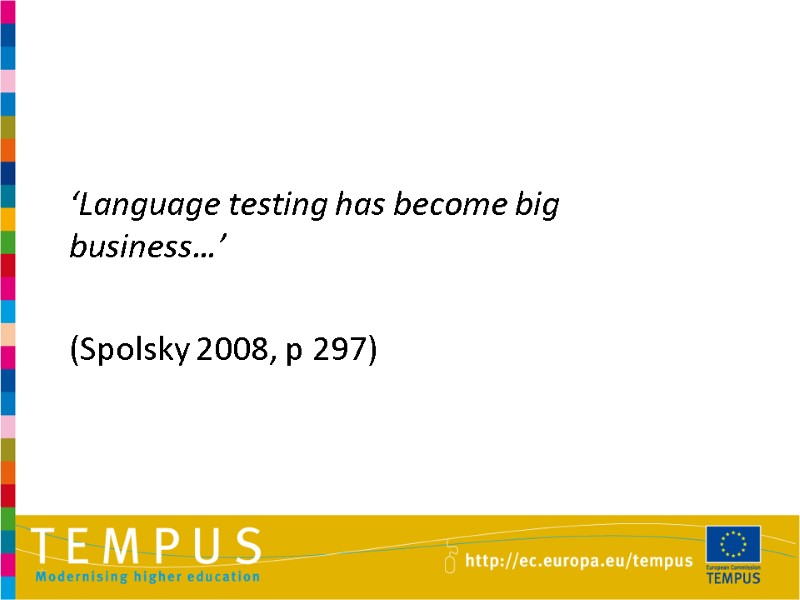
‘Language testing has become big business…’ (Spolsky 2008, p 297)
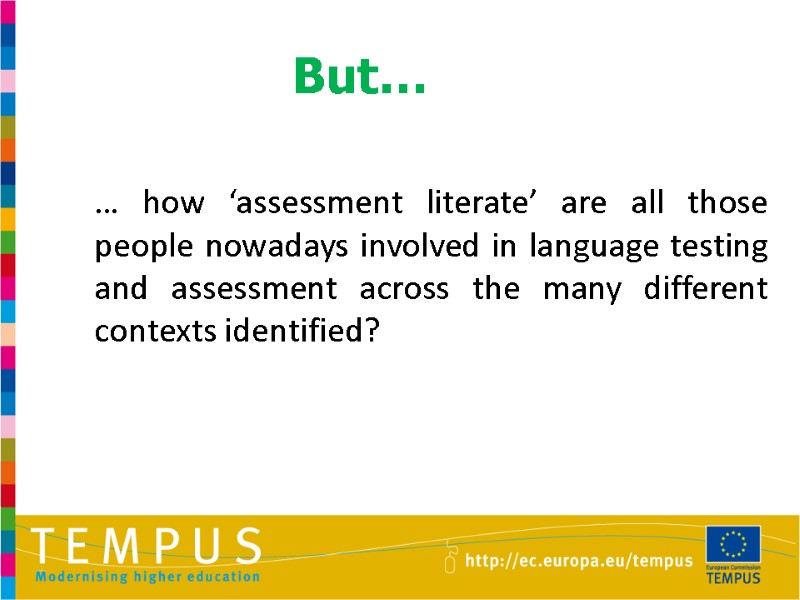
But… … how ‘assessment literate’ are all those people nowadays involved in language testing and assessment across the many different contexts identified?
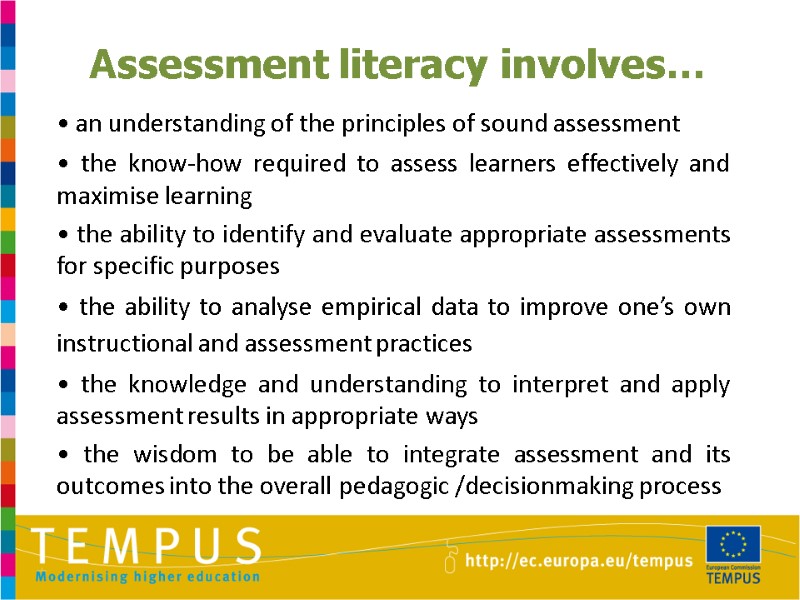
Assessment literacy involves… • an understanding of the principles of sound assessment • the know-how required to assess learners effectively and maximise learning • the ability to identify and evaluate appropriate assessments for specific purposes • the ability to analyse empirical data to improve one’s own instructional and assessment practices • the knowledge and understanding to interpret and apply assessment results in appropriate ways • the wisdom to be able to integrate assessment and its outcomes into the overall pedagogic /decisionmaking process
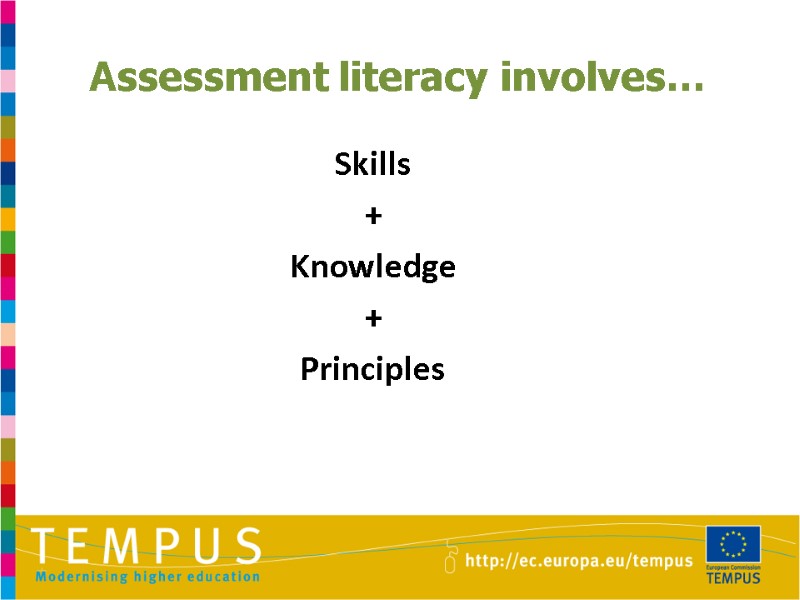
Assessment literacy involves… Skills + Knowledge + Principles
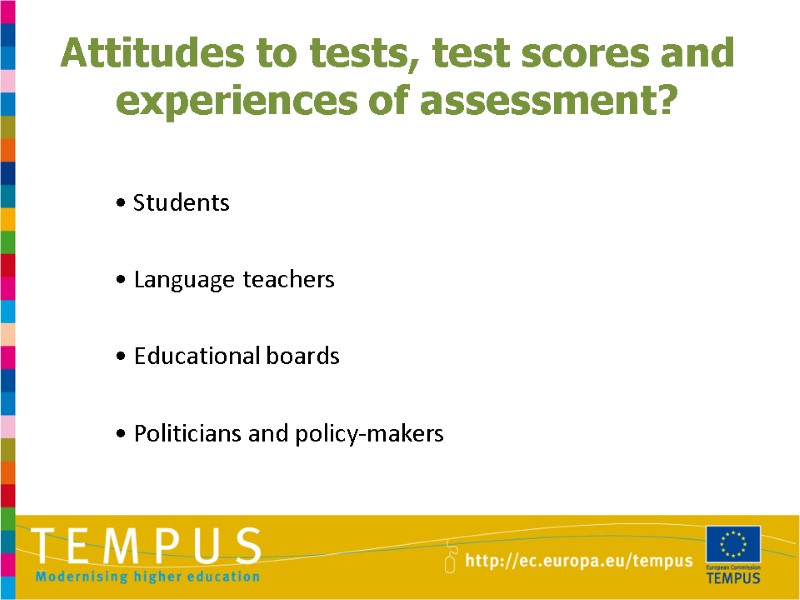
Attitudes to tests, test scores and experiences of assessment? • Students • Language teachers • Educational boards • Politicians and policy-makers
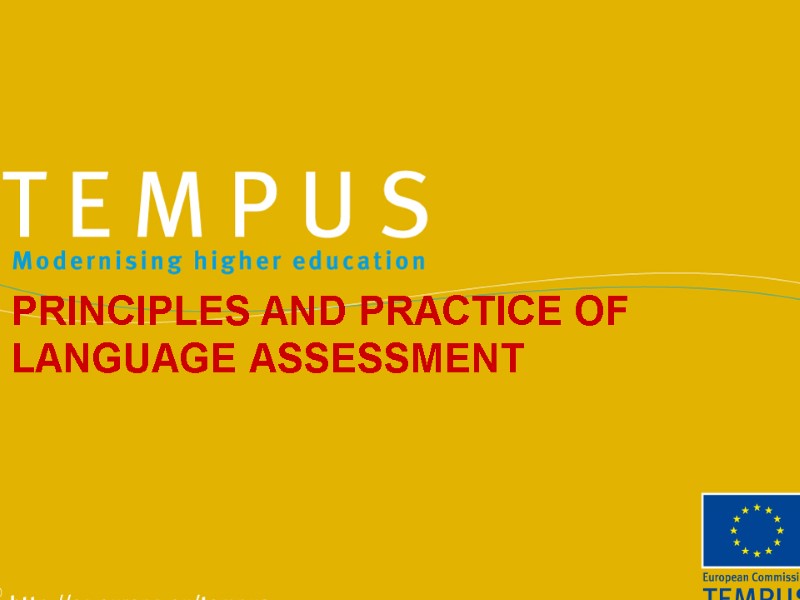
PRINCIPLES AND PRACTICE OF LANGUAGE ASSESSMENT
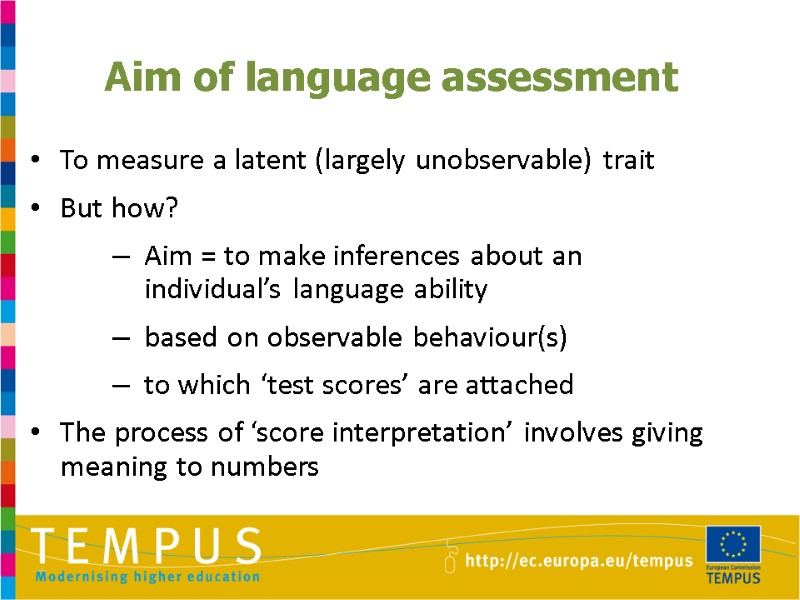
Aim of language assessment To measure a latent (largely unobservable) trait But how? Aim = to make inferences about an individual’s language ability based on observable behaviour(s) to which ‘test scores’ are attached The process of ‘score interpretation’ involves giving meaning to numbers
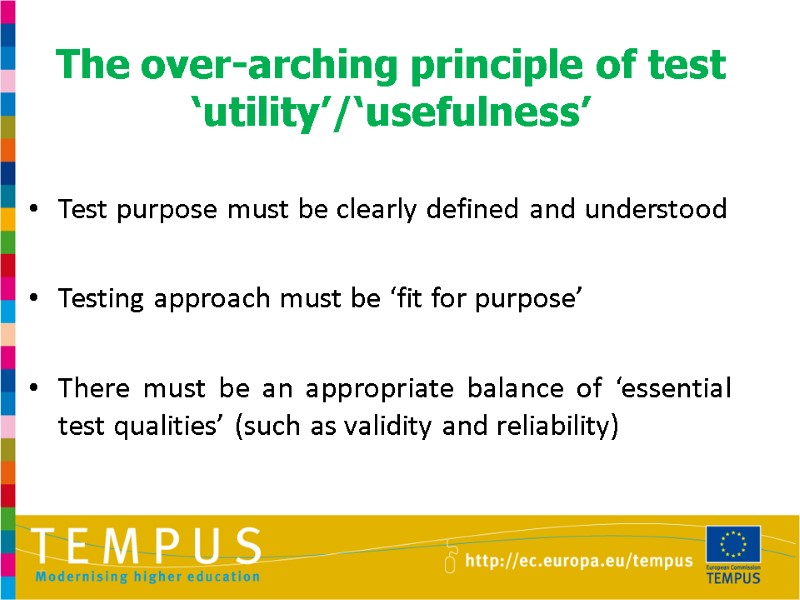
The over-arching principle of test ‘utility’/‘usefulness’ Test purpose must be clearly defined and understood Testing approach must be ‘fit for purpose’ There must be an appropriate balance of ‘essential test qualities’ (such as validity and reliability)
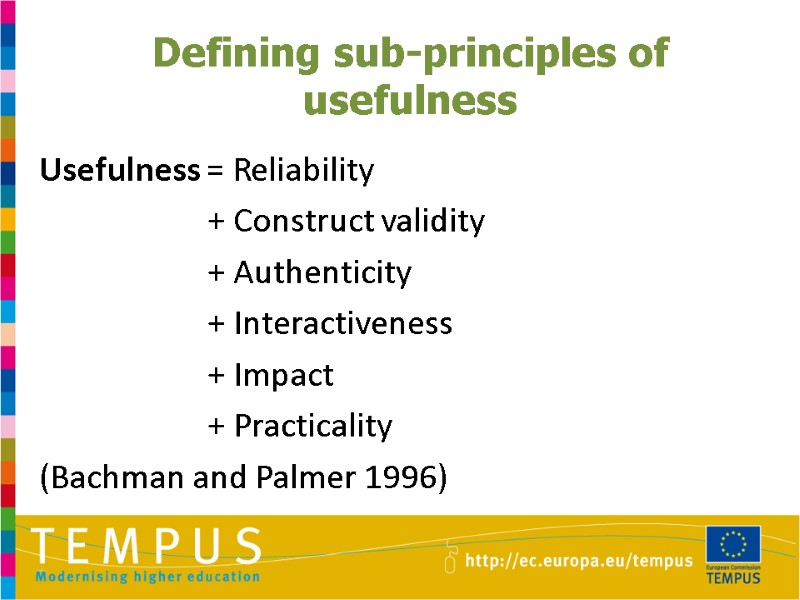
Defining sub-principles of usefulness Usefulness = Reliability + Construct validity + Authenticity + Interactiveness + Impact + Practicality (Bachman and Palmer 1996)
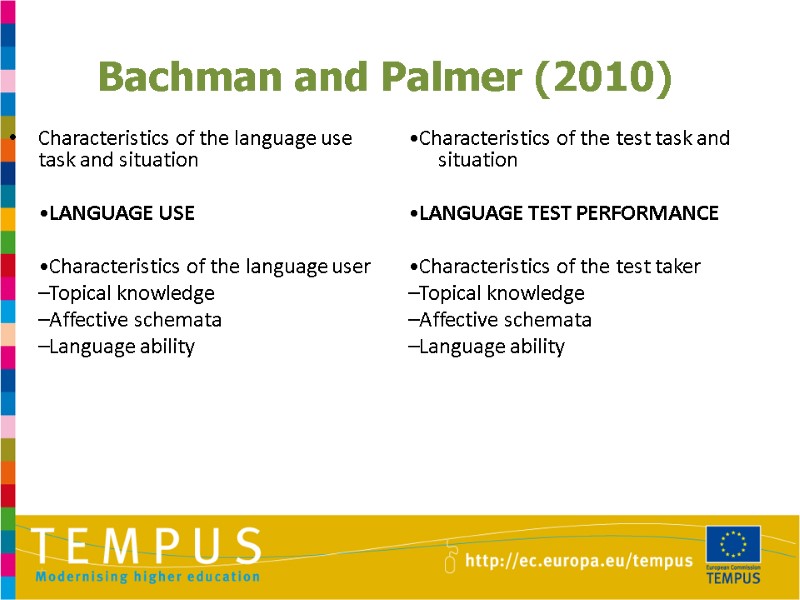
Bachman and Palmer (2010) Characteristics of the language use task and situation •LANGUAGE USE •Characteristics of the language user –Topical knowledge –Affective schemata –Language ability •Characteristics of the test task and situation •LANGUAGE TEST PERFORMANCE •Characteristics of the test taker –Topical knowledge –Affective schemata –Language ability
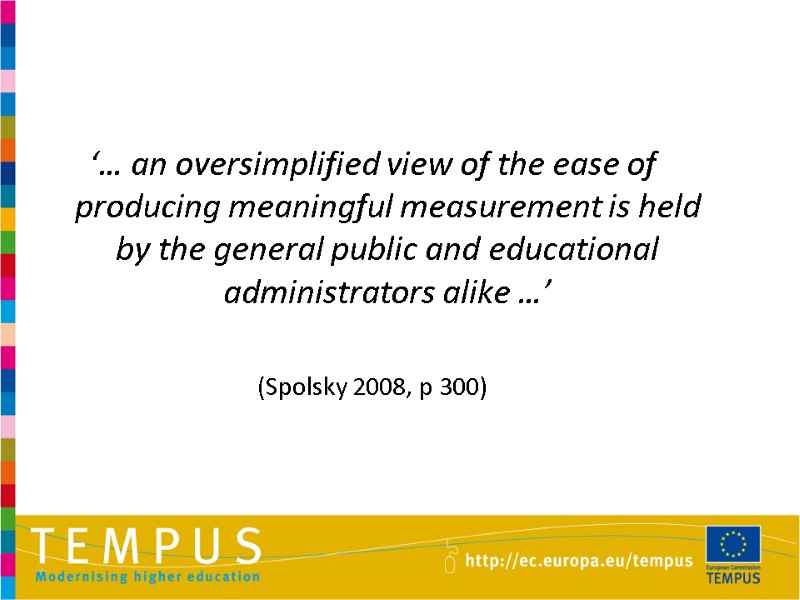
‘… an oversimplified view of the ease of producing meaningful measurement is held by the general public and educational administrators alike …’ (Spolsky 2008, p 300)
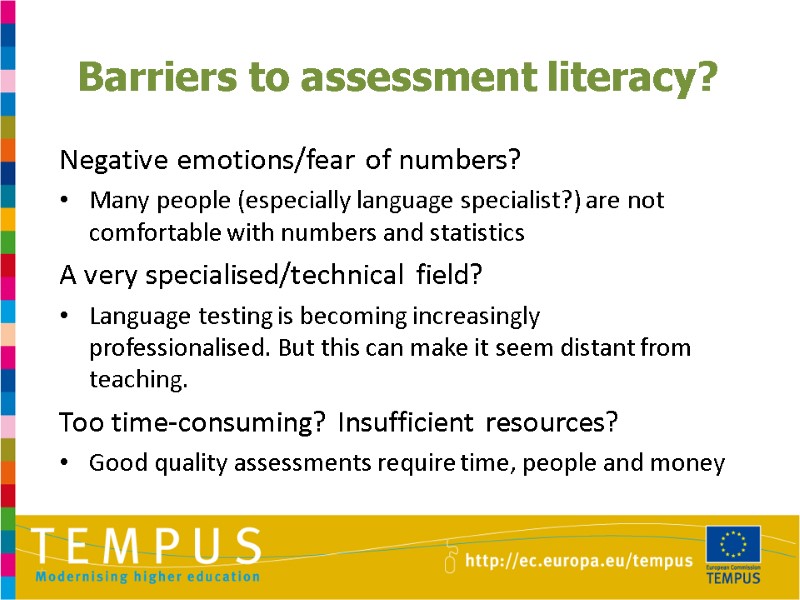
Barriers to assessment literacy? Negative emotions/fear of numbers? Many people (especially language specialist?) are not comfortable with numbers and statistics A very specialised/technical field? Language testing is becoming increasingly professionalised. But this can make it seem distant from teaching. Too time-consuming? Insufficient resources? Good quality assessments require time, people and money
15978-module_1_unit_1_lecture_i_assessment_literacy1.ppt
- Количество слайдов: 28

